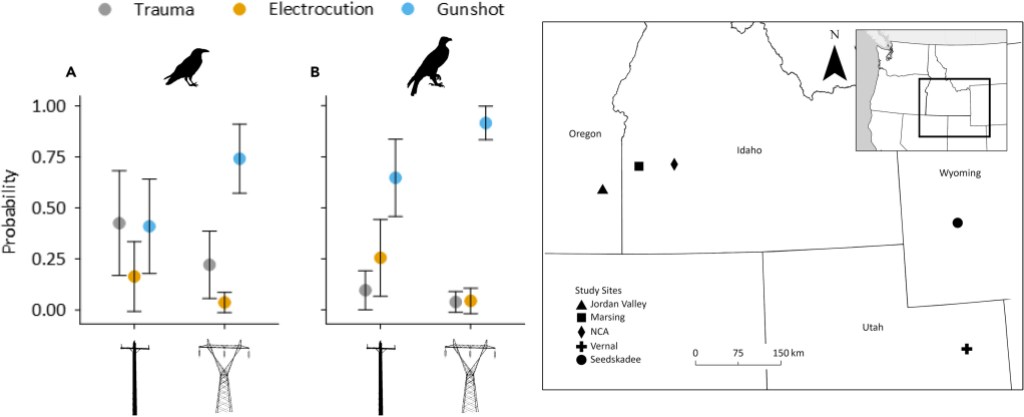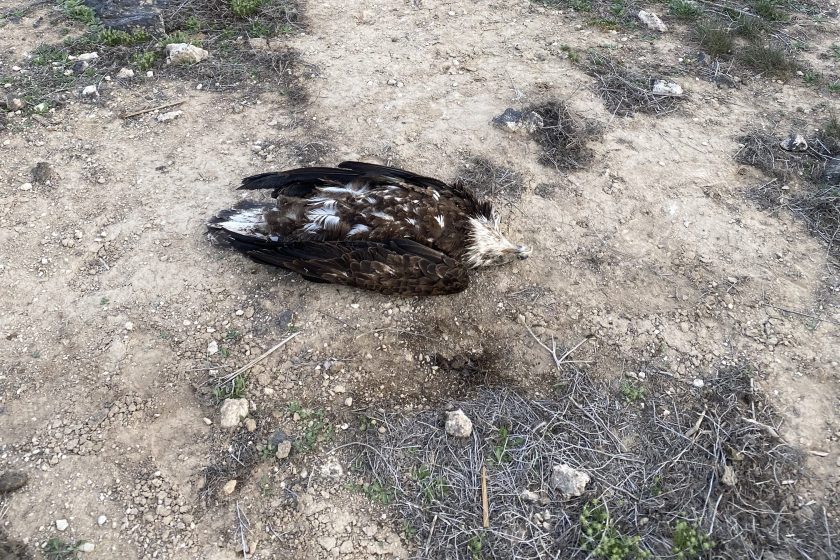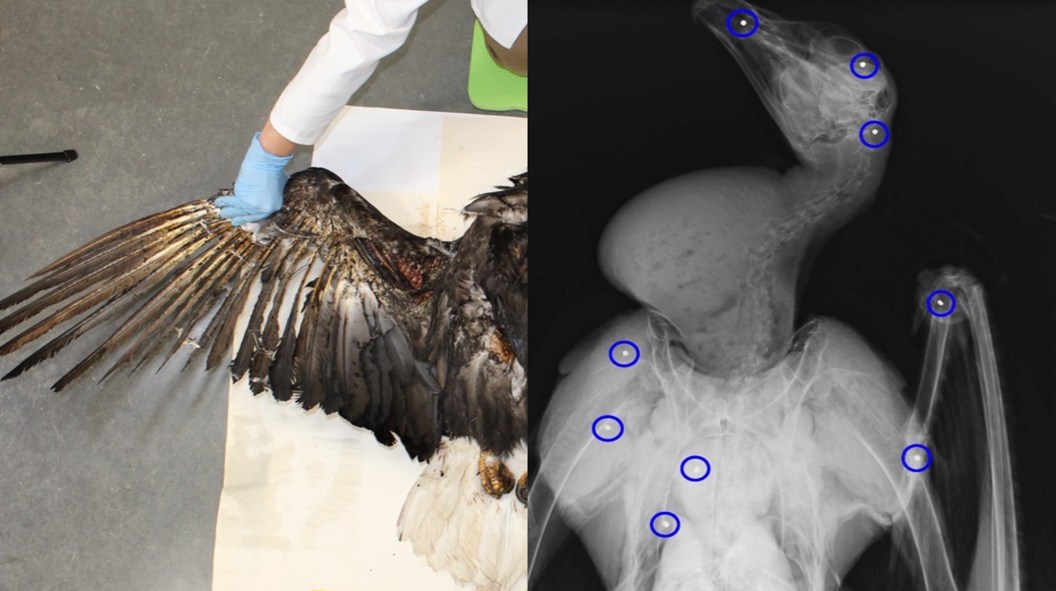While working as a wildlife biologist, Eve Thomason began to notice an unusual pattern: Dead birds were littering the roadsides beneath power lines in Idaho, but they hadn't died from electrocution, which would typically be the presumed cause of death.
Instead, these birds appeared to have been shot.
Thomason and her colleagues launched a study to test the conventional assumption that electrocution is the leading cause of death of birds near electrical infrastructures. Between 2019 and 2022, they examined the remains of 410 dead birds recovered from approximately 120 miles of power lines across four Western states. To determine a cause of death, each bird was examined for injuries, photographed, and subsequently taken to the Idaho Fish and Game Wildlife Health and Forensic Laboratory for comprehensive analysis and radiographs.
The results of the study revealed a grim surprise: The team successfully identified the cause of death for 175 birds, with more than 66% of them killed by gunshots, as evidenced by the bullet fragments and shotgun pellets embedded in the carcasses. The percentage of birds electrocuted was about 17%; another 17% met their end via blunt force trauma, such as being hit by a vehicle or from a high fall.
Of the birds studied, hawks, eagles, and ravens were more likely to die from gunshots than from any other causes.

Photo Courtesy of Science Direct
"These results demonstrate that illegal shooting of birds along power lines is much more common and a more significant threat to bird conservation than we thought," said Todd Katzner, the study's co-author and a U.S. Geological Survey Supervisory Research Wildlife Biologist.
Thomason, the lead author of the paper and a research associate at Boise State University's Raptor Research Center, along with Katzner and the rest of the research team, were surprised by the high percentage of gunshot-related deaths among birds found near power lines. This was particularly unexpected among protected species such as bald eagles, golden eagles, and several species of hawks and ravens. It is important to note that shooting these birds is prohibited under multiple state and federal laws.

A bald eagle found dead near the base of a power pole during a survey. The bird was determined to have died from gunshot wounds.
"Solving conservation problems only works when we can accurately identify the cause of those problems," Thomason said. "In this case, we need to know how birds are dying along power lines so that we can come up with strategies to reduce bird deaths."
Birds are naturally drawn to places that make for good perching, such as power lines and poles, but this increases their risk of being electrocuted. Electrocution happens when the bird comes into contact with two parts of the hot line at the same time, such as when taking off or landing. It's not uncommon, so utility companies invest ample resources into modifying structures and line configurations, insulating energized equipment, installing flight diverters, and installing safe perches and nest platforms.
"Utilities have focused efforts on reducing electrocution and collision along power lines for decades," Natalie Turley, the study's co-author and an Idaho Power biologist said. "The results of this study show that shooting is another conservation challenge for raptors that needs to be addressed."
Inaccurate diagnosis of cause of death undermines law enforcement, management, threat assessment, and mitigation, according to researchers. While efforts to prevent electrocution and collision continue to be crucial for bird conservation, it may now be even more pertinent to tackle the issue of illegal shooting.
READ MORE: The Worst Poaching Cases So Far in 2023




